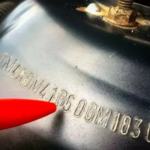Almost everyone knows that modern houses are built using thermal insulation materials. They insulate the floors, walls, roof and ceilings. But in order for insulation to be effective, you also need to use vapor barrier. Steam has high pressure on the walls, overlaps and roof than atmospheric. Wet steam passing through the insulation, at a lower external temperature condenses, turning into water. As a result of this water, insulation and walls are impregnated.
As a result, the wall is deteriorated and gradually destroyed. In order to avoid this over thermal insulation, a vapor barrier is applied, it is on the side of the insulation that is in contact with the warm air circulating in the room. Vapor barrier is necessary when warming the basements and roofs. There are cases when vapor barrier is not needed, for example, when warming a structure from a beam, in this case, the wood itself serves as a vapor barrier, since the wood perfectly restrains moist steam. In different cases, the need to use vapor barrier is calculated separately for each specific case using heat engineering calculation.






